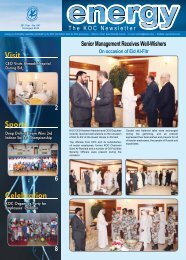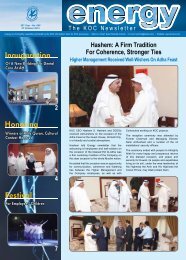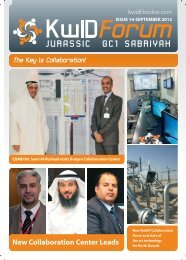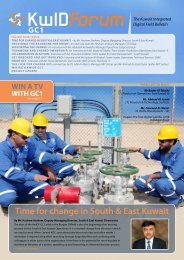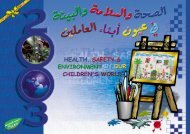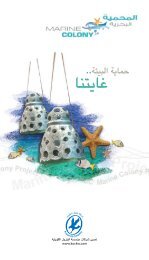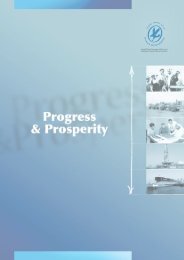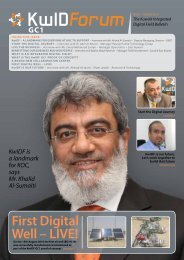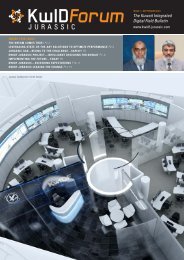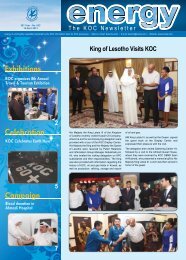4 - Kuwait Oil Company
4 - Kuwait Oil Company
4 - Kuwait Oil Company
You also want an ePaper? Increase the reach of your titles
YUMPU automatically turns print PDFs into web optimized ePapers that Google loves.
• Identifying requirements andmaking recommendations forimprovements and alignment ofIT and business, specifically forthe Burgan Development DrillingWells Process in relation toEnterprise Content Management.• Providing a financial businesscase for the Enterprise ContentManagement program byextrapolating the BurganDevelopment Drilling WellsProcess benefits to the enterprise.1. Information BusinessChallengesDuring the interviews, someinformation challenges associatedwith the process, people andsystem dimensions were identified.The manual process of managingthe content and sharing andcommunicating information resultedin unexpected delays, re-work, anddistrusted information.Normally, non-value time existsin any discipline during thecommunication and integrationof various business functionsand applications throughout theenterprise. In any business process,there is time where people arebeing contacted in some way toplay a critical part in running/executing a process for a givenrequest by following rules andusing systems. The aim was tounderstand how this time is beingused today and whether it can beaccelerated through automation,optimization or elimination of timewasted, to return non-value addedtime back to the <strong>Company</strong> bygetting the right documents to theright people at the right time.Figure 3 summarizes the information challenges observed during the study in relation to ECM:Process People System• Manual processes takingsubstantially longer than theirdesired completion• 4-5 months of re-work due toinaccuracy• Communication (Time spentsharing information)• Delays in providing welllocations and GC destination(Information is not timely)• Cultural change issues• Minimal systems integration• Different sources of updatedinformation• Complexity in managing andsharing data due to largeamounts of physical storage• No version control ofdocuments• Information retention policydefaults to “forever”• Lack of automation ofstandards and governanceFigure 3: Information Challenges2. Defining RequirementsThe next stage of this exercisewas the definition of what therequirements are and how theycan be satisfied. These can besummarized into four main pointsas follows:Reduce process latency andincrease process adherence by:• Automating all business processesincluding HSE processes throughdifferent applications andplatforms• Combining information,processes, and people to providea 360-degree view of informationand achieve optimized outcomes• Enhancing and automatingthe <strong>Company</strong>’s informationmanagement processes toefficiently manage informationthroughout its entire lifecycle,from creation to disposal• Enabling defensible disposalof content whose retentionperiod has expired for a bettermanagement of risk andstreamline regulatory complianceImprove Knowledge WorkerProductivity by:• Reducing rework (such asrecreating content not found,version control issues, andsearching but not findingdocuments)• Improving the Content Analyticsand Enterprise Search capabilities• Reducing or eliminatingunproductive tasks such as filingand organizing documents,managing document approvals,and managing document routing• Enabling systems integration• Enabling Version Control• Sharing business information andmaking it available for reuse• Delivering Trusted Informationthat improves fact-based businessdecisionsReduce Expense by:• Decreasing expenditures onpaper-based expenses (Reducepaper storage and distributioncosts)• Minimizing wasted time onrework18October - December 2012



